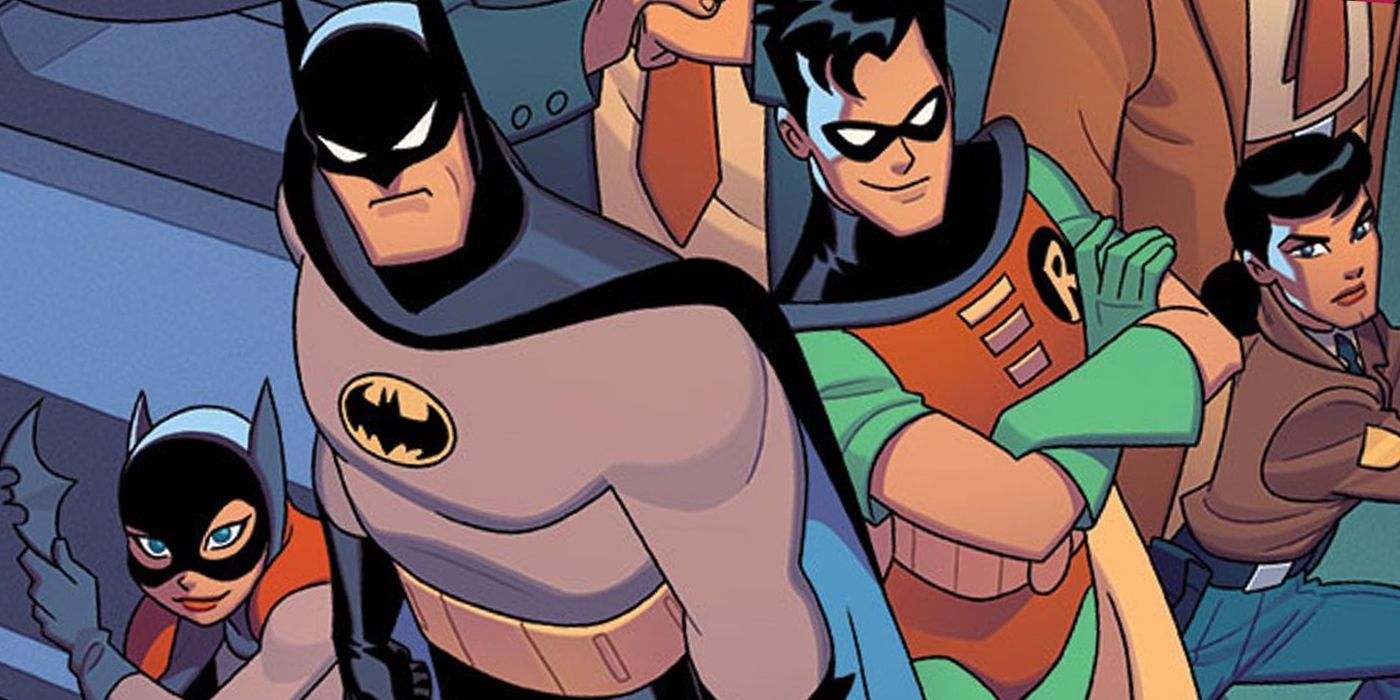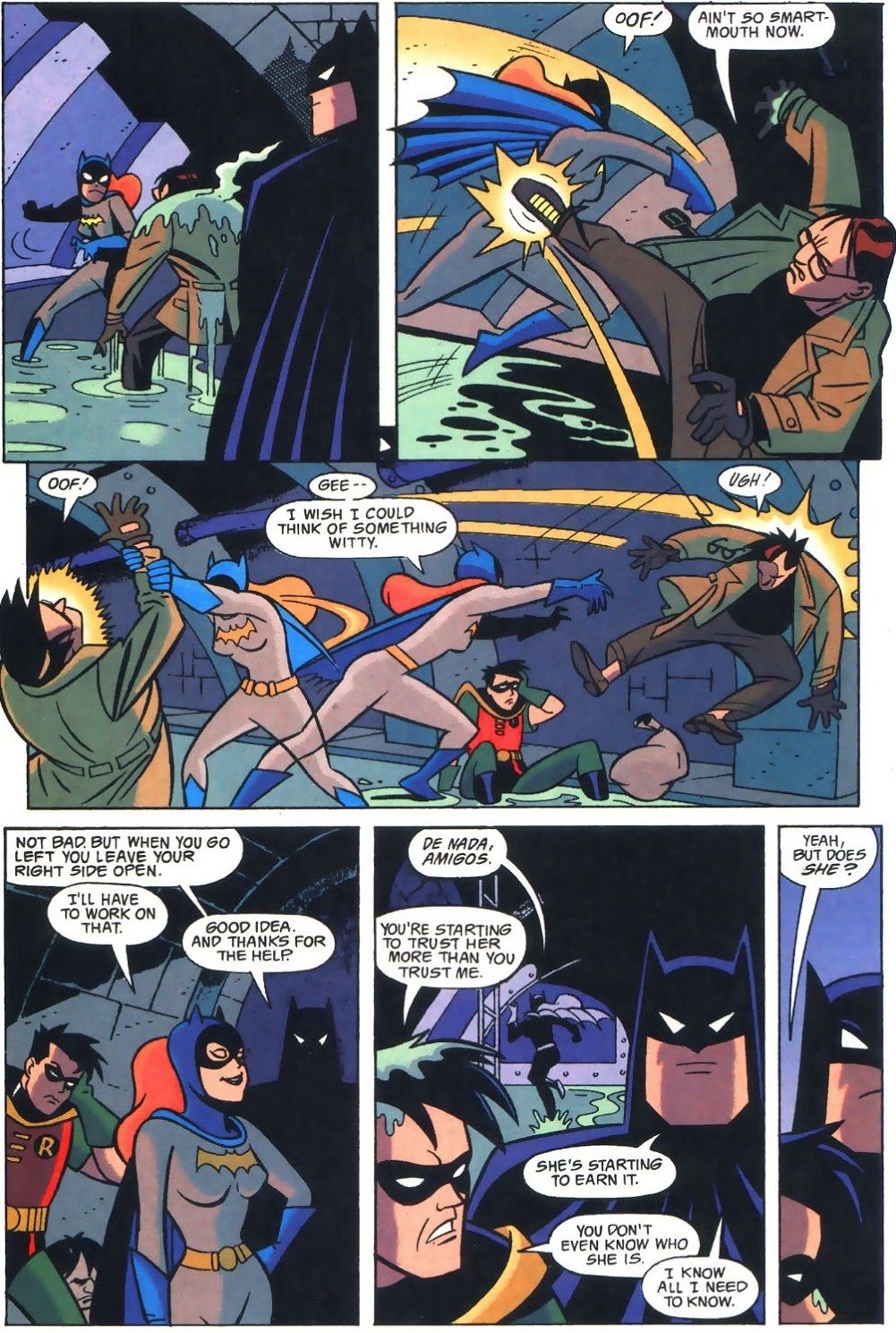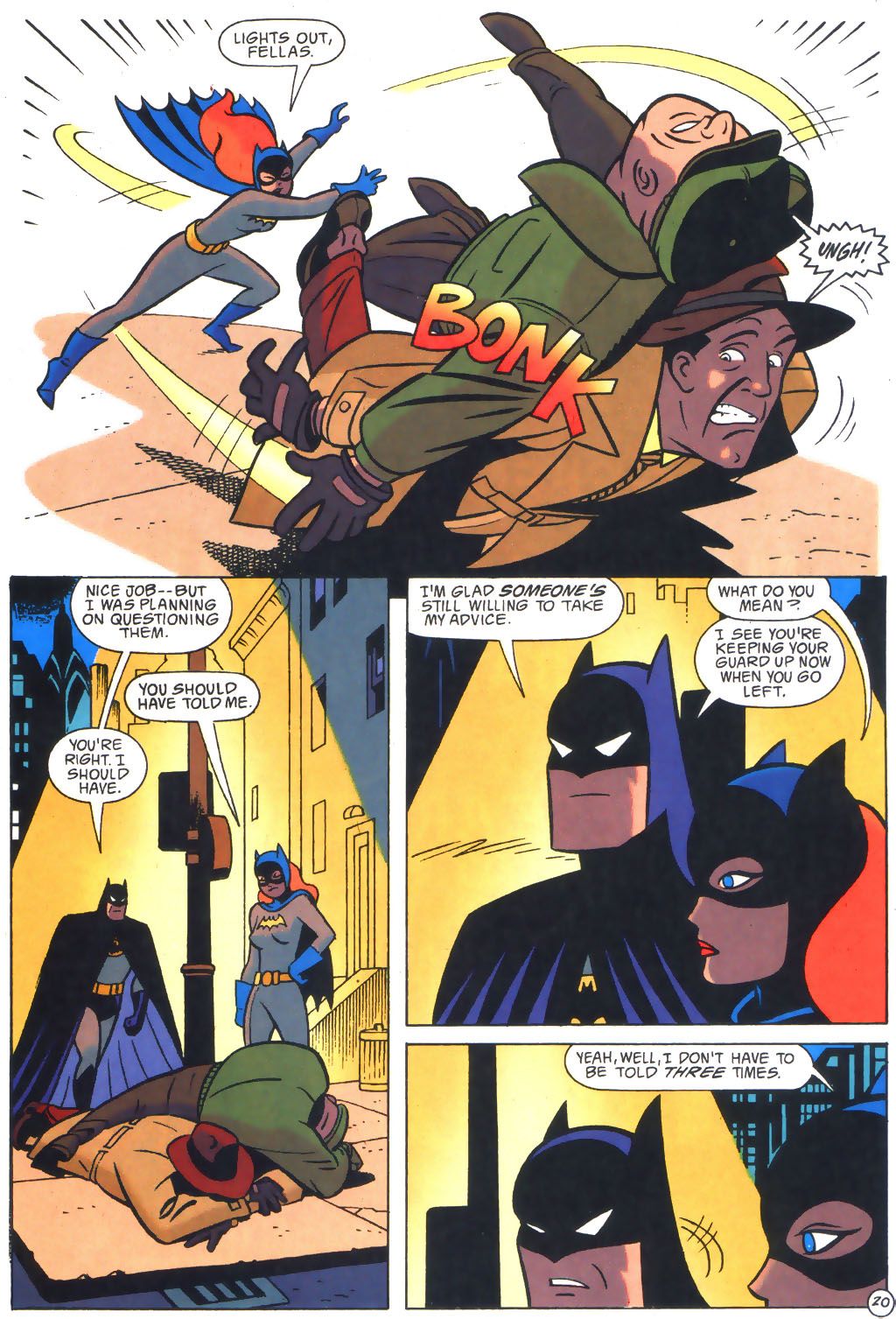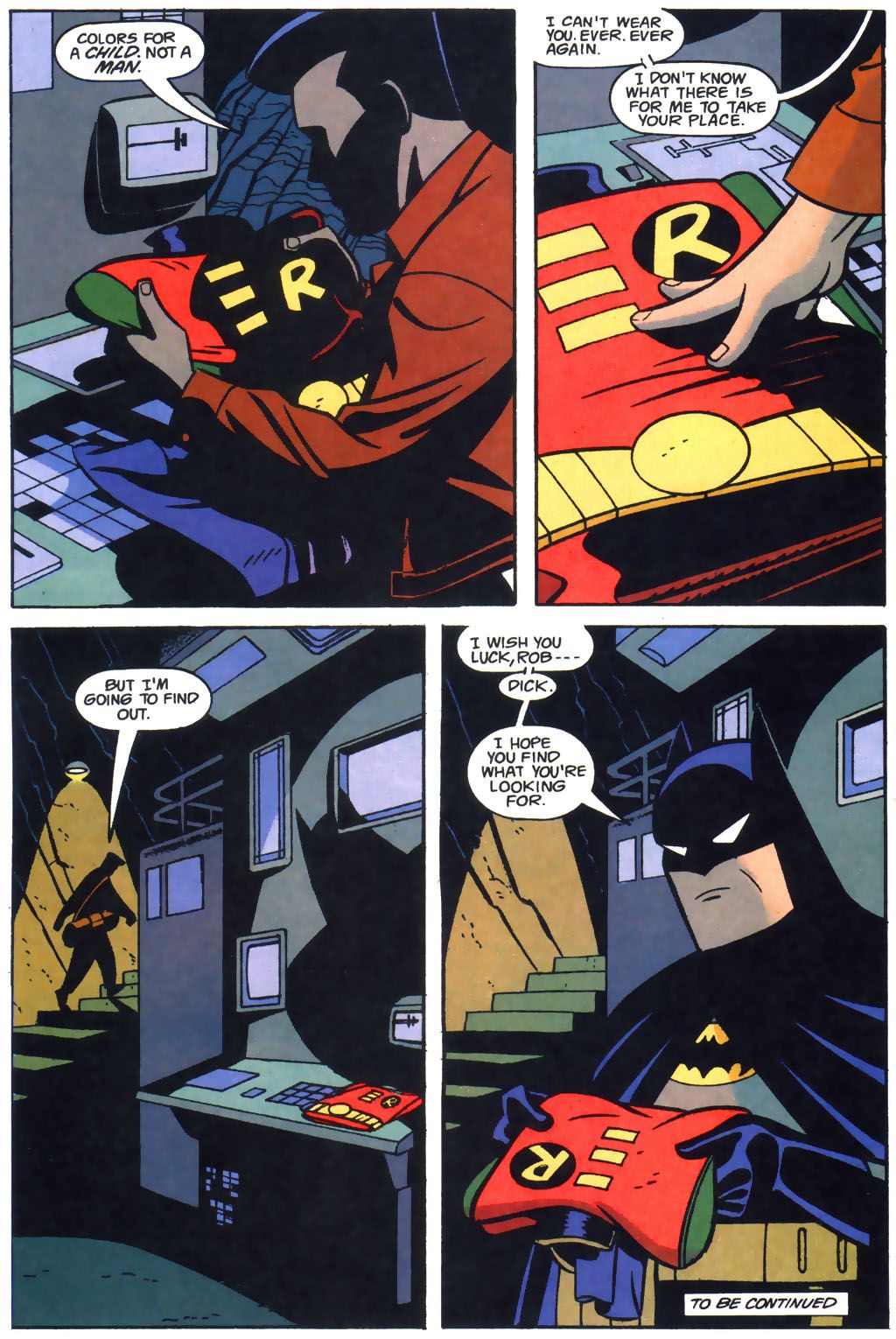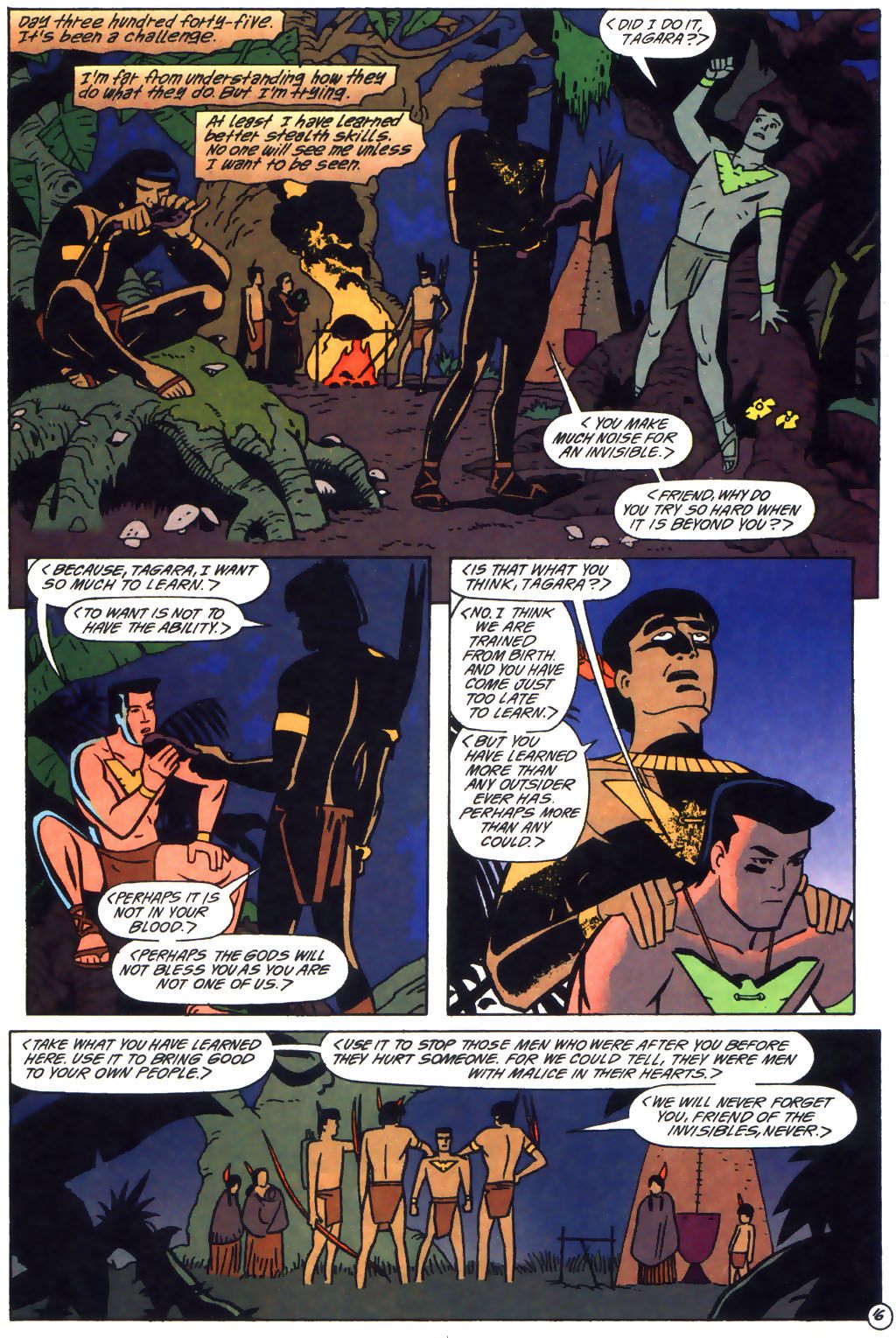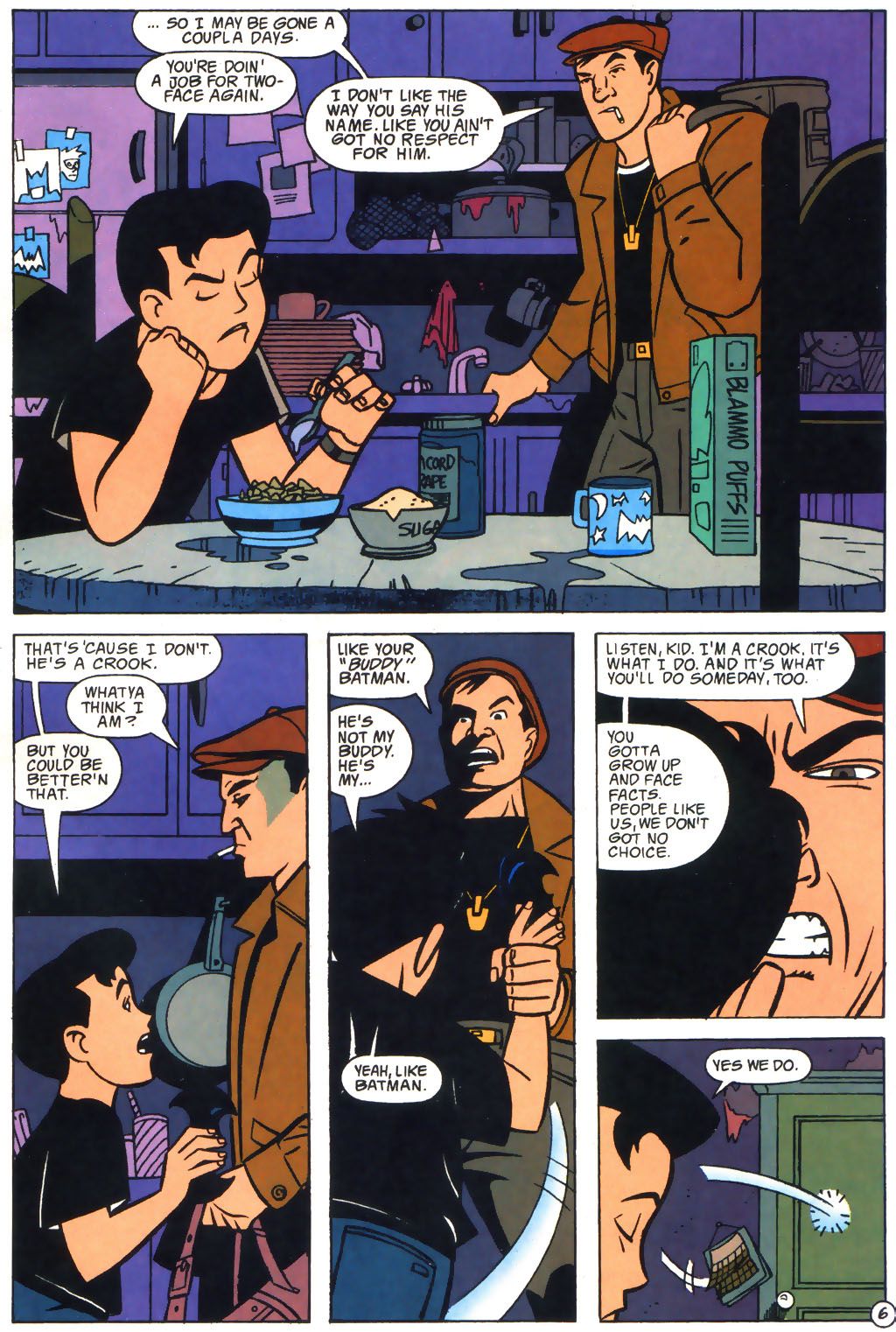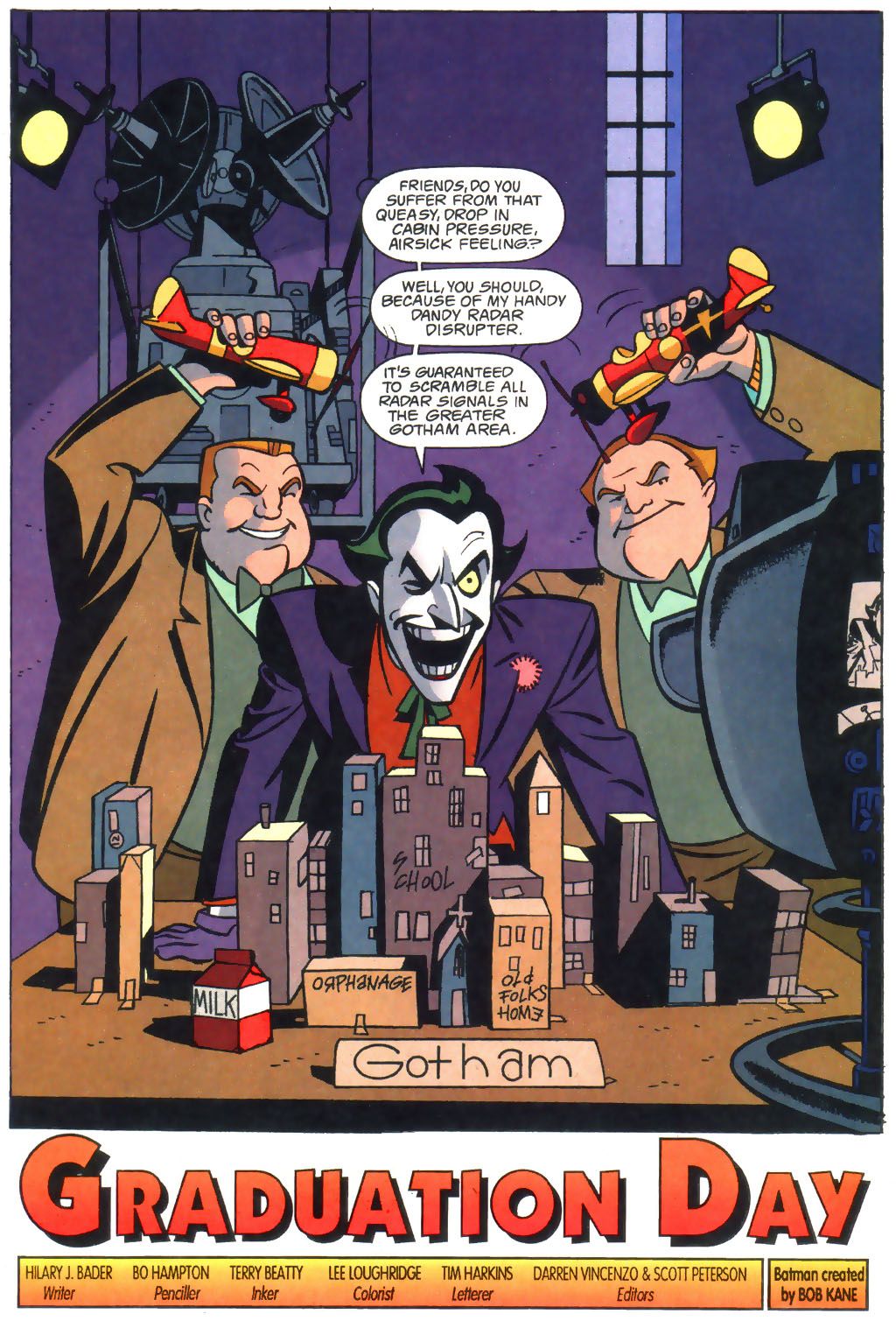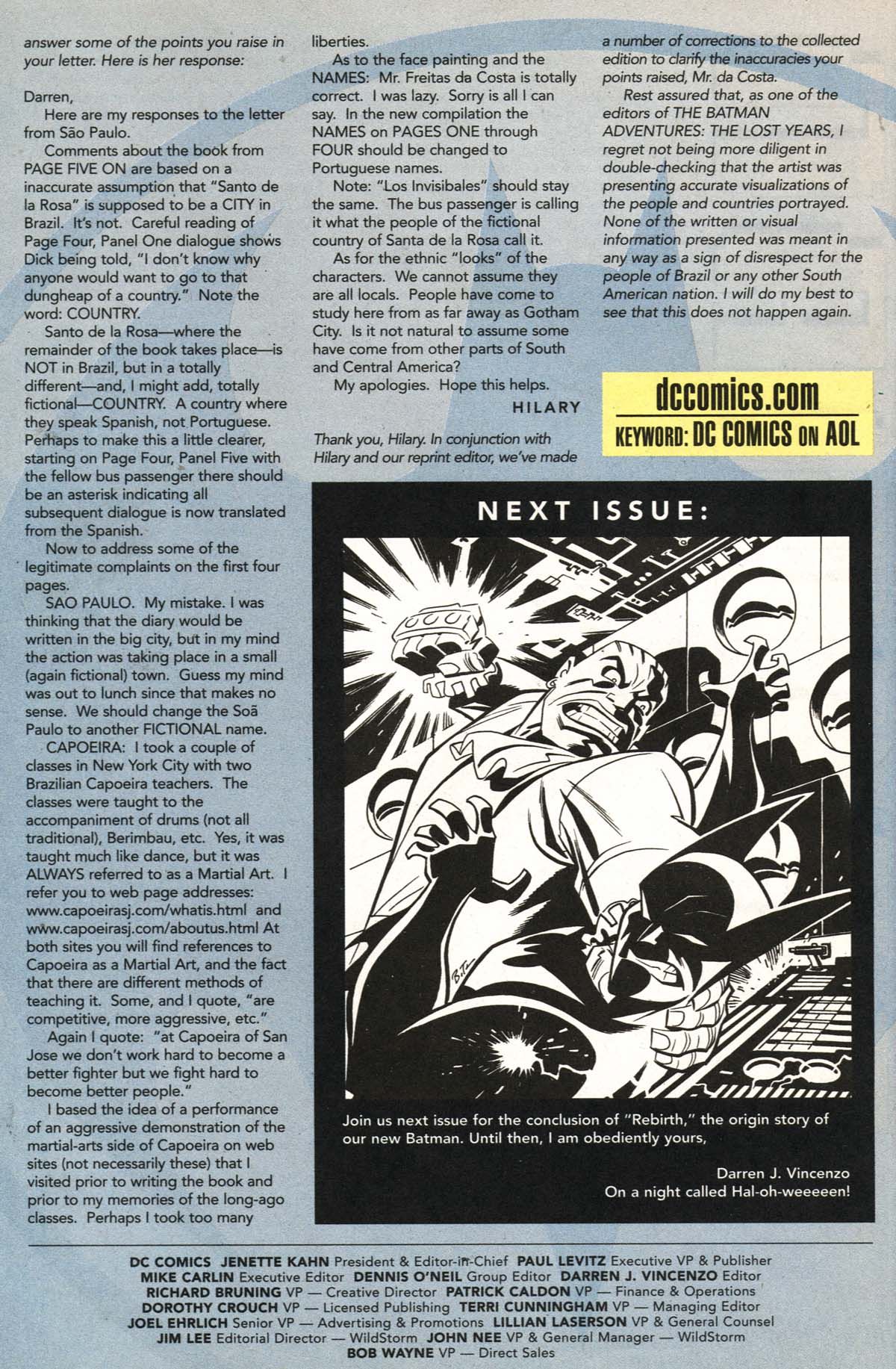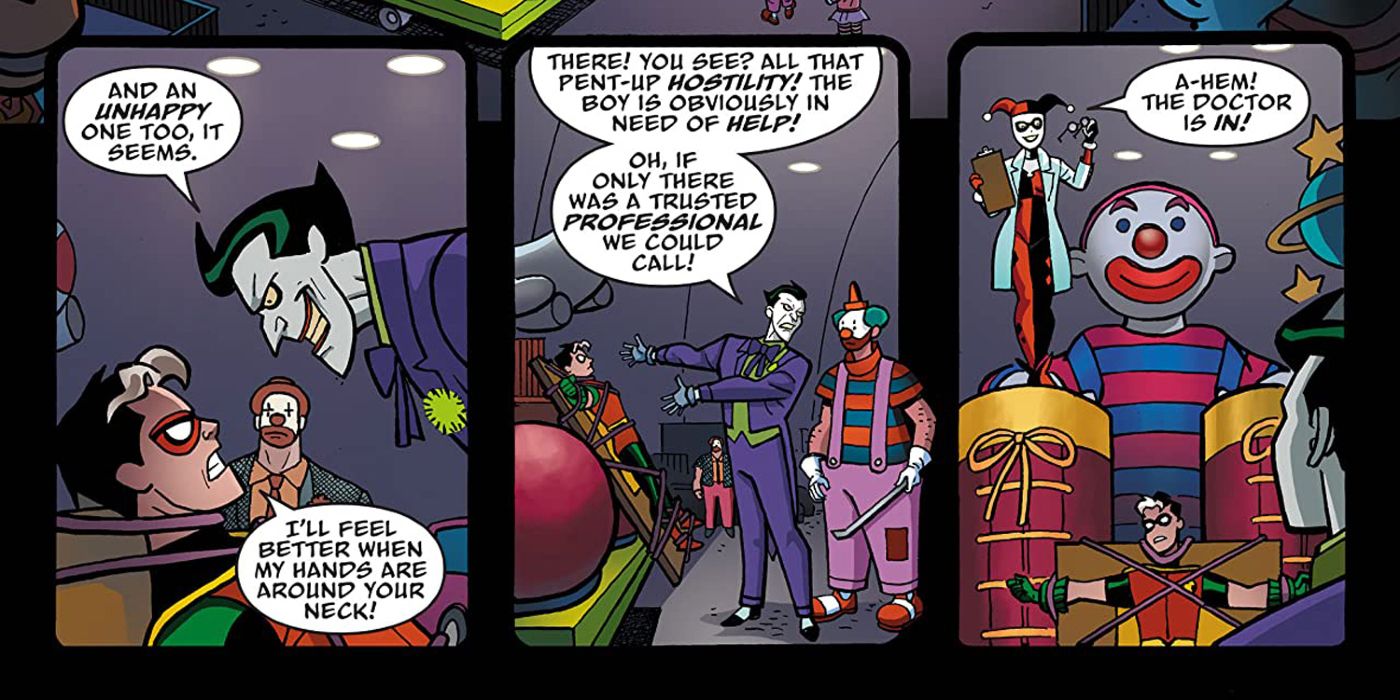Welcome to Adventure(s) Time's 135th installment, a look at animated heroes of the past. This week, the original comics explanation for the gap between Batman: The Animated Series and its follow-up, The New Batman Adventures. This entry has been suggested by Olaoluwapo Williams, and the "bypmoknface" and Gravity Falls Poland Twitter profiles. And if you have any suggestions for the future, let me hear them. Just contact me on Twitter.
The Batman Adventures: The Lost Years is a comic book miniseries that debuted in 1997 and was intended to fill the gap between Batman: The Animated Series and its revamp, The New Batman Adventures. Written by Hilary J. Bader, a staff writer on New Adventures and frequent contributor to DC's Adventures line of comics tie-ins, with art from Bo Hampton and Terry Beatty, the comic also fit the publication gap between DC's Batman & Robin Adventures and Gotham Adventures series.
Some fans tend to overlook the Adventures comics, but this limited series is key to the show's continuity. The miniseries features moments directly from the episodes "Old Wounds" and "Sins of the Father," but more importantly, elements dropped from earlier drafts of "Old Wounds" -- an episode that didn't air until October 1998 -- which gave comics fans early insight into the show's ongoing mysteries. If you're curious about the era that had Batman adopting a new Robin, Dick Grayson leaving to become his own man, and Batgirl officially joining Batman as an additional sidekick, Lost Years is essential reading.
The final version of "Old Wounds" already presents Batman and Robin's relationship as strained. The opening issue of Lost Years provides a little more context for their rift. Both stories emphasize Robin's eagerness to become his own person out of Batman's shadow, but Lost Years also indicates Batgirl likely played a role in their inevitable falling out. Considering a Batman/Batgirl romance is also now canon in the DC Animated Universe, this presents an interesting context for the sequence.
Batman never actually discovered Batgirl's secret identity on the show, and the idea was played as something of a joke. However, The Lost Years starts off with Batman noting that Batgirl leaves her right side open when leaning with her left.
He realizes later as Bruce Wayne, during a tennis match with Barbara Gordon, that she does the same thing. He's now suspicious but doesn't fully put the pieces together until his next team-up with Batgirl, where she gives herself away.
It seems Batgirl forgot it was Bruce, not Batman, who warned her the second time about this.
The second issue continues to splice new material between the "Old Wounds" flashbacks. One new moment includes the immediate aftermath of Dick punching Batman after he realizes Batman's been keeping Barbara's secret from him. We see Robin's final moments in the Batcave, saying goodbye to his Robin identity.
The third issue follows Dick in his first year traveling the globe, intensifying his training and searching for his identity away from Batman. While studying new martial arts techniques and searching for the art of invisibility, Dick adopts the name "John Smith," a nod to Batman's false identity during his training days. Improbably, Dick encounters Two-Face of all people in a South American jungle and foils his drug-running operation.
The issue features entirely new material, detailing information on Dick not revealed on the show, including the origin of the bird symbol he'll later adopt for his Nightwing outfit.
Lost Years #4 shifts the focus back to Gotham, now presenting a fuller version of the events of the episode "Sins of the Father." We also discover Tim Drake was watching the climactic battle from "Old Wounds" from a distance, and even acquired his pilfered Batarang during the adventure.
While Tim's father Steven "Shifty" Drake only appears as a photograph on the show, here he's given a few scenes that dramatize his relationship with Tim.
The final issue is another installment largely consisting of original material. Here, we're brought up to Dick's final days in exile, indicated as "Day 850" in his journal, which makes the "gap" period explicitly two-plus years. Dick joins an expedition to find a group of Tibetan monks, an operation funded by another villain he's improbably encountered, Ra's al Ghul. Dick agrees to recover the monks' artifact in exchange for their secret of flight. Oddly, the artifact is an angular bird shape, just like the necklaces worn by the South American tribe Dick encountered earlier.
The locals' "flight" comes from a winged costume, revealing the origin of Nightwing's eventual flying gimmick. After surviving his encounter with Ra's al Ghul, who swears he will have that artifact someday, teasing a still-dangling plotline, Dick realizes it's time to return home to Gotham. His reunion with Batman, the comics' final scene, is adapted from the closing moment in "Sins of the Father," tying the comic back to the cartoon.
BATMAN: THE LOST YEARS' DESIGNS
Nightwing's bird insignia is an invention of the animators, later adopted by the official comics canon. Although it might seem obvious that Nightwing would utilize bird imagery on his costume, his previous comics looks featured V-shaped design elements on his chest, instead.
Interestingly, The Lost Years features the heroes in their original costumes, unlike "Old Wounds," which has the characters in the New Adventures designs. The producers were apparently adamant about not going back to Batman's original look, as he also appears in his contemporary New Adventures look during the later flashback to Harley Quinn's origin in "Mad Love." A common fan theory is that we're always seeing Batman in the same outfit, regardless if it's the original Animated Series, New Adventures, or Justice League. The variations in color or chest emblem are all creative license.
More surprising, is the Joker's appearance during the second issue. It's certainly not the New Adventures look -- the one rejected by many fans, and even the source of some internal controversy on the show. Bo Hampton's Joker avoids the inhuman eyes, boomerang hair, and missing lips of the New Adventures Joker, but doesn't quite portray the beefier Joker with massive teeth from the original Animated Series episodes. It's a leaner, more angular design, and it's amazingly similar to the look Bruce Timm and company will later develop for 2000's Batman Beyond: Return of the Joker's flashback sequence. Joker later appeared with that look in Justice League and Static Shock, and it's become his standard DCAU design. Yet, it seems Bo Hampton got there a few years before the shows did.
BATMAN: THE LOST YEARS AND CONTINUITY
Tim Drake remarks in the broadcast version of "Sins of the Father" that the Robin costume on display is "the real Robin suit." The fourth issue of Lost Years has a curious alternate line -- Tim calls it "the original Robin suit." Ty Templeton has indicated he received word from show producer Paul Dini that the red and black suit Tim wears was meant as Dick Grayson's original outfit, one we just never happened to see on the cartoon.
While the DCAU Tim Drake borrows heavily from the comics' incarnation of Jason Todd, one element is true to Tim's original origin. When Tim is told to stay in the Batcave while Batman goes off to confront Two-Face, the teen disobeys and adopts the Robin costume on display nearby. This is identical to Tim's initial story arc in 1989's "A Lonely Place of Dying" comics storyline from Marv Wolfman, George Perez, and Jim Aparo.
The early issues of the Batman Beyond tie-in featured fan letters on this miniseries. One writer from Brazil called out Bader for her portrayal of South American culture, such as getting names of cities wrong and mixing up Spanish and Portuguese. Bader penned a response, acknowledging some mistakes, but also reiterating most of the locations in Dick's story are fictional. The editor notes corrections will be made in the trade paperback edition.
BATMAN'S LOST YEARS CONTINUE
Of course, Lost Years didn't turn out to be the final say in the gap between shows. 2020 brought fans Batman: The Adventures Continue from writers Paul Dini and Alan Burnett, producers of the original animated television series, and artist Ty Templeton, a longtime Adventures creator who even drew the covers for Lost Years.
Dini stated the goal of the comic was to "[fill in] certain gaps in the original Batman: The Animated Series, events that didn't have a bearing on the series at the time." To their credit, Dini and Burnett didn't attempt to answer questions already resolved by Lost Years.
Instead, the book's most notable addition is an origin for Jason Todd, the rebellious second Robin of the comics who'd previously never appeared in the DCAU. The comic, set during the New Adventures, has flashbacks to that missing gap in the timeline, revealing Batman took on Jason as the second Robin shortly after Dick left Gotham.
However, continuity is not the new series' strong point. For instance, how does Firefly play a part in Jason's origin when the villain debuts after Tim becomes Robin? It's arguable all of the flashbacks to Jason's stint as Robin occurs in Gotham during the Nightwing-centric issues of Lost Years, but this is a stretch.
Truthfully, Lost Years reads as a more coherent companion to the original series without The Adventures Continue. Its continuity implants make logical sense and have credibility as the "untold tales" initially conceived by the writers' staff back in the 1990s. Lost Years isn't well-known, arguably "lost" in its own way, but fans shouldn't overlook it.

